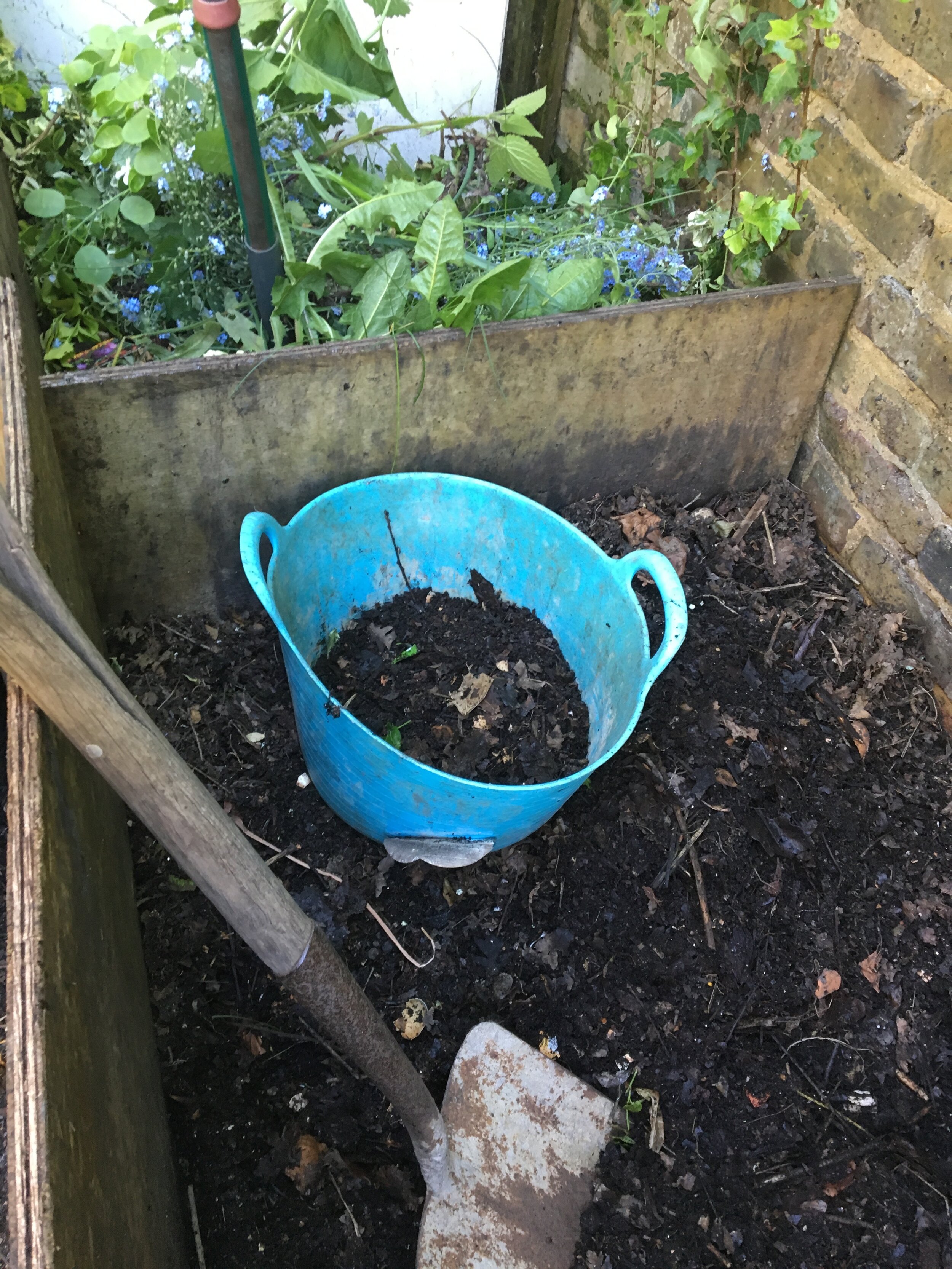50 Shades of Grey
Disclaimer: I haven’t properly read the book. The year it was published I was singing in the Glyndebourne chorus and was passed a well-thumbed copy that was doing the rounds. After a quick look through it, I decided it seemed disappointingly tame, a bit embarrassing and, most importantly, a monumental step backwards for feminism – but I can be a bit judgy.
Still, there is one aspect of gardening where its’ themes of control and surrender seem horribly apt: slugs.
Gardening in a small space, slugs are a total nightmare. They are everywhere and seem to specifically target plants closest to my heart (an entire batch of cosmos plants in one evening). All gardeners wrestle with slugs, and methods of dealing with them seem to divide us into vengeful sadists, or soft-hearted masochists with an endless tolerance for horticultural pain. I find myself split between the two.
Metaldehyde slug pellets have been banned in the UK since 2019, so all the methods below are more or less ‘organic’. This is no bad thing because old fashioned pellets risked poisoning the wildlife which are the easiest defence against slugs – what better option than to turn a blind eye and let others do the killing for you? We have a frog in our garden, Henrietta, and I was keen to give her the opportunity to thrive and feast. Unfortunately, she seems to be more partial to worms and avoids the slugs completely. This is hugely frustrating but I feel I must respect her gastronomic choices, especially as I would make the same call in her shoes.
Henrietta poses with a worm in her mouth
I have used ‘organic’ Ferrous phosphate pellets a bit. These are supposed to be safe for wildlife, but some of the chemicals contained in them can harm earthworms and they take 3-6 days to kill a slug, so they can’t be used as a barrier around precious plants.
And so, until Henrietta decides to expand her palate, I am forced to rely on more extravagant methods.
Sweet vengeance
For those among us who wish to look their victims in the eye as they die, there are various methods which read like an adaptation from Game of Thrones. After the loss of my cosmos, things in our garden got personal and I set out that evening with a yoghurt pot and a pair of gloves to collect the culprits, or at least enough scapegoats to teach a lesson. Slugs come out at night so it’s a good way to get hold of them.
A bucket of woe
Death by chickens - appeals to me in particular, being both vengeful and immensely practical (feeding your chickens to produce eggs and chicken manure for the compost heap). I’m working on persuading Toby so watch this space.
Salt - is possibly the cruellest way to kill them, reducing them to a primal gue before your very eyes. A dramatic death, guaranteed to give you a brief sense of justice followed by a bad night’s sleep and a lingering taste of guilt.
Booze - For the more squeamish, beer traps are a good option. Sink a yoghurt pot filled with beer into the soil and the slugs will be irresistibly drawn to it, just make sure you keep the rim of the pot slightly higher than the soil to make sure insects don’t get in too. In the morning you will find a deliciously murky brew awaits you that will make a nutritious addition to your compost heap.
Gluttony – When wheat bran is sprinkled in a ring around plants, the slugs gorge themselves only to find the bran expanding inside them. A bonus is that they become twice as nutritious to any hungry wildlife – maybe a bran stuffed slug would be enough to tempt even Henrietta. On the downside, it’s not clear how ‘instant’ this death is and bran needs topping up regularly in wet weather.
Caffeine overdose - Surely a hit in today’s coffee culture, a ring of coffee grounds around plants supposedly gives slugs a caffeine buzz from which they can’t recover, and also provides a high nitrogen mulch for plants.
Consumed by parasites – Nematodes are microscopic parasitic worms which come as a dry powder and can be mixed with water and sprayed over the garden. They live in the soil and will eat any slugs from the inside out. Studies found that they are best used preventatively, ie before damage occurs as a regular treatment in the garden, probably because they take a few days to work. It’s an expensive method, has to be repeated every few months, and works best in warm wet weather (when the worms can breed and move easily), but it does seem to be the best method of keeping them at bay.
Cruelty of a different kind…
Finally, if you don’t mind the slugs but do mind your neighbours, you can always fall back on the old ‘wall toss’, just keep in mind that slugs are able to find their way home. Luckily for us we have a solid brick wall on one side and just occasionally, when loud music has been blaring all day Arthur hasn’t napped, and the garden reeks of a ‘Camberwell carrot’ I fling a few beasties over my shoulder, wish them good health, and feel slightly better about the world.
And for the masochists
Once you’ve got a certain amount of hurt and anger out of your system, rage has turned to guilt and your slug population is under control, there’s a raft of options (see next post) for gently limiting damage and protecting your most vulnerable plants.




